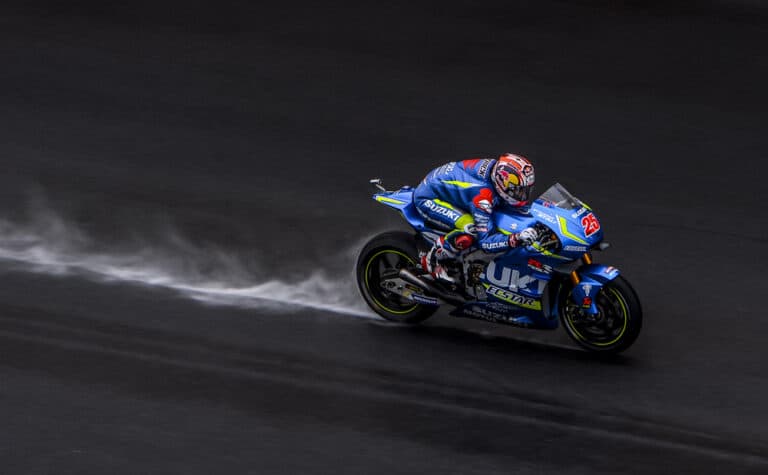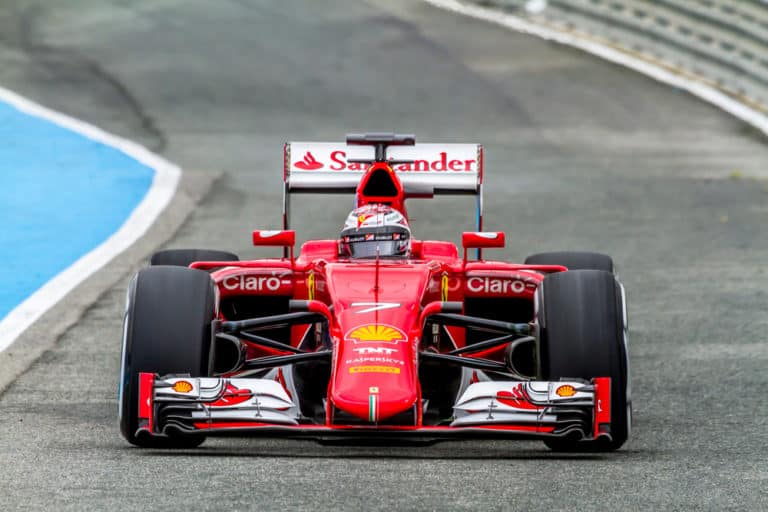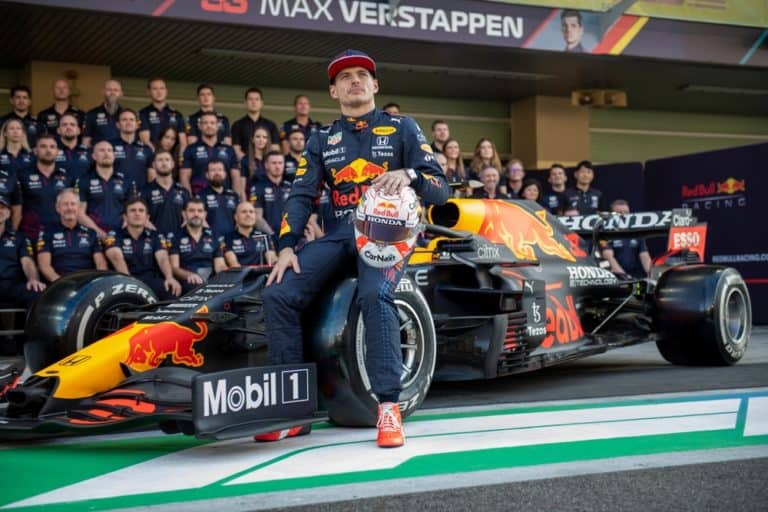Have you ever watched an F1 race and seen all the drivers crowding around scales at the end of the race? This is not just something that is done for interest’s sake and is actually essential for multiple reasons.
F1 drivers are weighed after each race for two reasons. The first is to find out how much weight they lost during a race. The second is to make sure they and their cars are not below the minimum weight stipulated in the rules.
This article will explore why F1 drivers and cars are weighed after each race. It’ll also take a look at why weight matters in F1, the weight restrictions in F1, the average weight of drivers, and how much weight a driver can lose in just one race. So, read on to find out about everything to do with driver weight in F1. No need to weigh to learn about driver weight, so let’s put the pedal to the metal.
Why Are F1 Drivers Weighed?
F1 drivers are weighed for medical and technical reasons which are outlined below.
- Medical Reason: It is essential to know precisely how much weight a driver has lost after the race so that appropriate measures can be taken after the race. Drivers lose between 2-4kg per race, and we discuss why in more detail later on in the article.
This is a significant amount of weight to lose in only two hours, and most of it comes from sweat. Therefore, the medical and physical training staff needs to know this information to help drivers pick this weight back up again.
It is also important to know a driver’s weight because if they have lost more weight than usual in a race, then the training sessions the following week need to consider that and will likely be less intense.
- Technical Reason: F1 cars with the driver in them have a minimum weight of 764kg (1684lbs). Cars and drivers are weighed after the race to ensure that they have not dropped below this weight during the race. F1 cars have gotten heavier in recent years, primarily due to improvements in safety features. Therefore, it is important to ensure that teams are not stinting on crucial safety features to make their cars lighter.
Drivers are weighed separately from their cars as they can be weighed much quicker than car weighing. This means they can quickly get started with the post-race celebrations, interviews, or other commitments.
Does Weight Matter in F1?
Weight is one of the most critical things in F1, and the relationship between weight and speed is relatively self-explanatory. Think about if you have to run 100m on a track. If you have to run with a backpack full of bricks, you’re going to much slower than if you ran that same distance without the backpack loaded up with bricks.
With F1, it is the same principle. The heavier the car is, the more weight the engine has power forward. This means that it is vital to reduce any excess weight on the car, affecting the car’s lap time. In a sport like F1, where drivers can be separated by a few milliseconds, it is vital to make sure the car is as fast as possible.
However, driver weight (within reason) does not matter anymore due to new regulations being implemented in 2019. Read on to find out more about these regulations and why they are beneficial to the sport.
What Are The Rules Regarding Driver Weight In F1?
According to the Federation Internationale de l’Automobile (FIA), who oversees Formula 1 and creates the sport rules, the minimum weight of the driver and their seat is 80kg (176lbs). If a driver is below this weight, extra weight in the form of ballasts needs to be added to the cockpit to increase the weight to 80kg.
This rule was implemented in 2019 to reduce the disadvantage of having tall, heavy drivers. Before these regulations were implemented, having a small, light driver posed a significant advantage.
In the past, this would have meant a sizeable advantage for Alpha Tauri based solely on the fact that their driver is much smaller and therefore lighter. However, the new regulations mean that this is no longer an issue and evens the playing field more.
This rule change was especially important for bigger drivers who had to eat a lot less to remain at a competitive weight. As a result, they were not in peak physical condition because they were not eating enough food.
Furthermore, many drivers came out in support of these regulations, as they were no longer under as much pressure to keep their weight down as much as they used to. Mercedes driver Valtteri Bottas said, “I think the regulation is good, especially for the taller drivers. It makes life a bit easier.” He also stated, “Many drivers had to be below our natural weight, and it is very easy to get ill or sick. This is the first winter for many years that I didn’t get any flu or any sickness.”

Average Weight Of Formula 1 Drivers
The exact weight statistics of most Formula 1 drivers are not publicly available. This year, the drivers who have come from F2 have reliable weight statistics, as their weights are published on the F2 website. However, the weight of F1 drivers is not published on the F1 website, and are, therefore, the figures in the public domain are not always entirely reliable.
The lightest driver on the grid in 2023 is almost certainly Yuki Tsunoda, who is 54kg. The heaviest driver appears to be Lewis Hamilton, who is 73kg. Most F1 drivers seem to weigh somewhere between 65-70kg (143-154lbs), although some of the shorter drivers weigh a bit less.
However, it is crucial for drivers to stay around this weight because once the race suit (which is heavy because it is fireproof), helmet (about 1.2kg), and seat are added, a driver does not want to weigh more than 80kg. Therefore, it is important that drivers remain below 75-76kg; otherwise, they will be adding extra and unnecessary weight.
How Much Weight Do F1 Drivers Loose During A Race?
Formula 1 is a physically taxing sport for the drivers. Due to the incredibly high g-forces the drivers experience while racing, the impact on the body is enormous. Just like any other sport that involves intense physical exertion, the drivers sweat a lot.
However, unlike other sports where athletes wear shorts and a t-shirt and are made from a lightweight material, F1 drivers wear thick, heavy, fireproof race-suits and helmets. The racing suits weigh around 1kg, and drivers also wear underwear, undershirts, and a balaclava made from the same fireproof material. Added to this, the temperatures in the cockpit of an F1 car can reach around 50°C (122°F).
This indicates just how hot it can and tiring it can be for drivers during an F1 race. As a result, drivers generally tend to lose about 2-3kg per race. This can rise to 4kg in hotter conditions, such as in races in Singapore and Malaysia. This is because the outside temperature is much warmer than in other countries, meaning that the cockpit’s temperature goes up.
Conclusion
Weight is significant in F1. Excess weight can slow a car down, but not enough weight can compromise the driver’s safety. It is important to strike the right balance between speed and all the necessary safety features needed to protect the drivers.
Therefore, it is crucial to make sure that these rules are adhered to, and this is why F1 drivers and their cars are weighed after each race.






